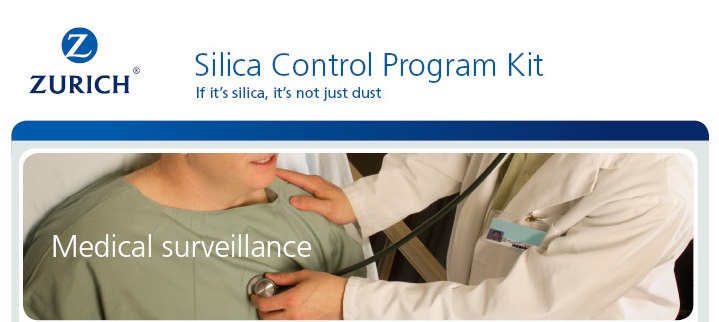

                |
A medical
surveillance program can supplement a dust monitoring and control
program, however, it should not be a substitute for a dust monitoring
and control program. An effective medical surveillance program can have
the following objectives:
Who should be included in a medical surveillance
program? The General Industry Standard requires that employers make medical surveillance available at no cost to the employee, and at a reasonable time and place, for each employee who will be occupationally exposed to respirable crystalline silica above the PEL for 30 or more days per year. The Construction Standard requires that employers make medical surveillance available at no cost to the employee, and at a reasonable time and place, for each employee who will be required under the standard to use a respirator for 30 or more days per year. All medical examinations and procedures are
to be conducted by a Physician or other Licensed Health Care Professional
(PLHCP).
Per the Silica Standards, the Medical Protocol requirements include: Initial Examination Initial (baseline) examinations are to be made available to employees within 30 days after initial assignment, unless the employee has received a medical examination that meets the requirements of the Silica standards within the last three years. The examination shall consist of:
Periodic Examinations Medical examinations, including the chest x-ray and PFT are to be made available at least every three years, or more frequently if recommended by the PLHCP. Information provided to the PLHCP The employer must ensure that the examining PLHCP has a copy of the Silica Standard(s), and be provided with the following information:
PLHCP's Written Medical Opinion for the employee The employer must ensure that the PLHCP explains to the employee the results of the medical examination and provides each employee with a written medical report within 30 days of each medical examination performed. The written report must contain:
A
sample Employee notification form, per the Silica Standards, can be found
by clicking this link.
PLHCP's Written Medical Opinion for the employee The
employer must obtain a written medical opinion from the PLHCP within 30
days of the medical examination. The written opinion must contain
only the
following:
If
the employee provides written authorization, the written opinion can also
contain either or both of the following:
OSHA's
sample Employers Notification
form can be found by clicking this link. OSHA's sample Written Authorization form can be found by clicking this link. Additional examinations If the
PLHCP's written medical opinion indicates that an employee should be
examined by a pulmonary specialist, the employer shall make available a
medical examination by a pulmonary specialist within 30 days after
receiving the PLHCP's written medical opinion.
The examining pulmonary specialist is to be provided with all the information that the employer is obligated to provide to the PLHCP. The employer shall ensure that the specialist explains to the employee the results of the medical examination and provides each employee with a written medical report within 30 days of the examinations. The written report must contain the following:
Per OSHA
standard 29
CFR 1910.1020 - Access
to employee exposure and medical records, medical records
shall be maintained for at least 30 years following the employee's
termination of employment, unless the employee is employed for less than
one year and the records are provided to the employee upon termination. The record must contain the following information about the employee:
Sample Crystalline Silica Medical Surveillance Records (pdf version) (Top)© 2017 The Zurich Services Corporation. All rights reserved. |